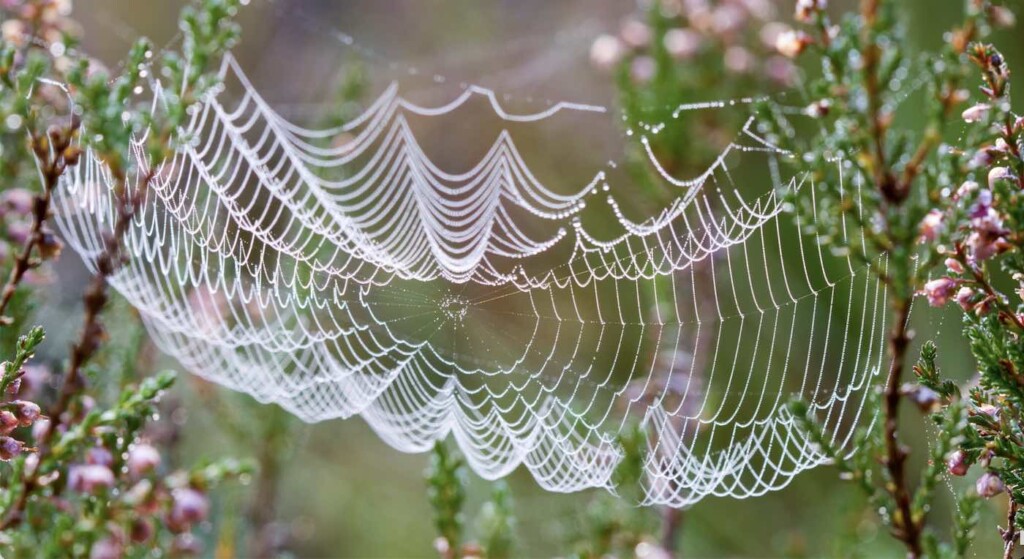
Spiders use their webs as giant microphones reveals new research that shows how the arachnids weave webs to do more than just trap their insect prey.
Scientists at Binghamton University, New York, found that spiderweb silk moves at the velocity of particles in a sound field for highly sensitive, long-distance noise detection.
Unlike human eardrums and conventional microphones that detect sound pressure waves, the researchers explained that spider silk responds to changes in the velocities of air particles as they are thrust about by soundwaves.
That sound velocity detection method remains largely underexplored compared to pressure sensing, but American scientists say it holds “great potential” for high-sensitivity, long-distance sound detection.
In their investigations, the team found that the webs match the acoustic particle velocity for a wide range of sound frequencies.
“Most insects that can hear sound use fine hairs or their antennae, which don’t respond to sound pressure,” said study leader Professor Ronald Miles. “Instead, these thin structures respond to the motion of the air in a sound field.”
“I wondered how to make an engineered device that would also be able to respond to sound-driven airflow. We tried various man-made fibers that were very thin, but they were also very fragile and difficult to work with.”
“Then, Dr. Jian Zhou was walking in our campus nature preserve and saw a spiderweb blowing in the breeze,” he added.
Before building such a device, the team had to prove spiderwebs really responded to sound-driven airflow.
ALSO CHECK OUT: Bumblebees Share Knowledge Like Humans and Chimpanzees, Suggesting the Hive Mind Is More Personal
To test the theory, they simply opened their lab windows to observe the Larinioides sclopetarius, or bridge spiders, that live on the windowsills.
The research team played sound ranging from 1 Hz to 50 kHz for the spiders and measured the spider silk motion with a laser vibrometer.
They found the sound-induced velocity of the silk was the same as the particles in the air surrounding it, confirming the mechanism that the spiders use to detect their prey.
OTHER DISCOVERIES LIKE THIS: Moths’ Rippled Forewings Are Actually a Sophisticated Defense System Against Echo Location
“Because spider silk is, of course, created by spiders, it isn’t practical to incorporate it into the billions of microphones that are made each year. It does, however, teach us a lot about what mechanical properties are desirable in a microphone and may inspire entirely new designs,” said Professor Miles.
He is due to present the findings at a joint meeting of the Acoustical Society of America and the Canadian Acoustical Association in Ottawa, Canada.
SHARE These Scientists’ Awesome Discovery, And Just Imagine A Spider’s Web Microphone…




















